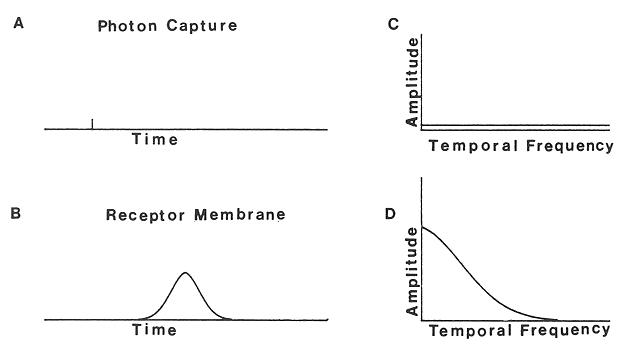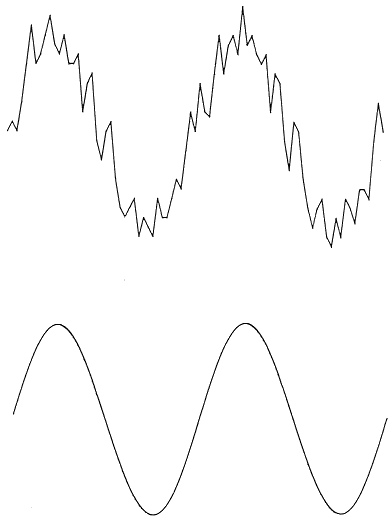Above the threshold, the photoreceptors can be approximated as linear systems that
convert light signal (photon streams) as input into neural response as output
(depolarization or hyperpolarization of membrane potentials, change of neural
transmitter release, and firing rates). This process can be in general modeled by
Upon capturing a single photon at time instance ![]() represented by
a delta function
represented by
a delta function


The receptor is assumed to be a linear system in the sense that its response to
n photons all captured at ![]() is
is ![]() .
.
In general, if in the photon stream of light there are ![]() photons
captured in time interval
photons
captured in time interval
![]() ,
the light can be represented
as a time signal
,
the light can be represented
as a time signal
| r(t) | = | ||
| = | |||
| s(t)*h(t) |
This is called the convolution of s(t) and h(t). In general,
convolution describes the input-output relationship of a system if it is linear
and time-invariant (LTI), and its response to a impulse ![]() is h(t),
called impulse response function (also called point spread function
(PSF) and Green's function in physics).
is h(t),
called impulse response function (also called point spread function
(PSF) and Green's function in physics).
The convolution of light signal x(t) with the impulse response function h(t)of the photoreceptors has the effect of smoothing (low-pass filtering) the input signal. When the signal is weak and affected by random fluctuation caused by the probabilistic nature of photon capture, the light signal x(t) may have random high frequency noise superimposed on the real signal which usually changes slowly. The smoothing effect will remove this type of noise while reserving the slowly changing component of the signal.
